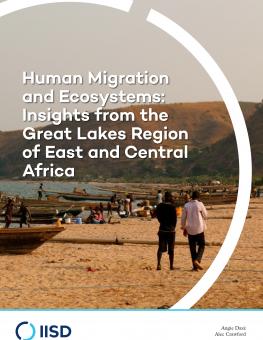
Human Migration and Ecosystems: Insights from the Great Lakes Region of East and Central Africa
For centuries, people in east and central Africa have used migration as a strategy to respond to shocks, sustain livelihoods and adapt to changes in their environment.
Conservation actors, including both policymakers and practitioners, are not fully aware of the dynamics of migration and the potential impacts on ecosystems and biodiversity. The “Migration and Conservation in the Great Lakes Region” project attempted to address this gap by: (a) developing a methodology to better understand the drivers and impacts of migration on livelihoods, natural resources, ecosystems and biodiversity; (b) developing recommendations for policy-makers and practitioners working on these issues; and (c) developing a toolkit for conservation practitioners to help them design and implement conservation interventions that are sensitive to the existing and potential impacts of human migration on critical ecosystems.
To achieve these objectives, the project carried out research at three case study sites: the Bale Mountains ecosystem in southern Ethiopia, the Misotshi–Kabogo ecosystem in the eastern Democratic Republic of Congo (DRC), and the Lake Albert ecosystem in Buliisa District in northwest Uganda. The purpose of this document is to synthesize learning from the three case studies and provide analysis and recommendations for addressing the impacts of human migration on ecosystems. It is intended for conservation practitioners working in areas under pressure from migration, as well as development practitioners interested in gaining a better understanding of migration–conservation links.
You might also be interested in
Migration and Conservation in the Misotshi-Kabogo Ecosystem
Migration and Conservation: A toolkit for conservation and development practitioners
This toolkit helps conservation practitioners assess the impacts of human migration on critical ecosystems.
Migration and Conservation in the Bale Mountains Ecosystem
Human migration is playing a significant role in driving land conversion and sustaining the overexploitation of key natural resources in the Bale Mountains ecosystem, to the detriment of conservation and traditional livelihoods.
Migration and Conservation in the Bale Mountains Ecosystem (Policy Brief)
Human migration is playing a significant role in driving land conversion and sustaining the overexploitation of key natural resources in the Bale Mountains ecosystem, to the detriment of conservation and traditional livelihoods.